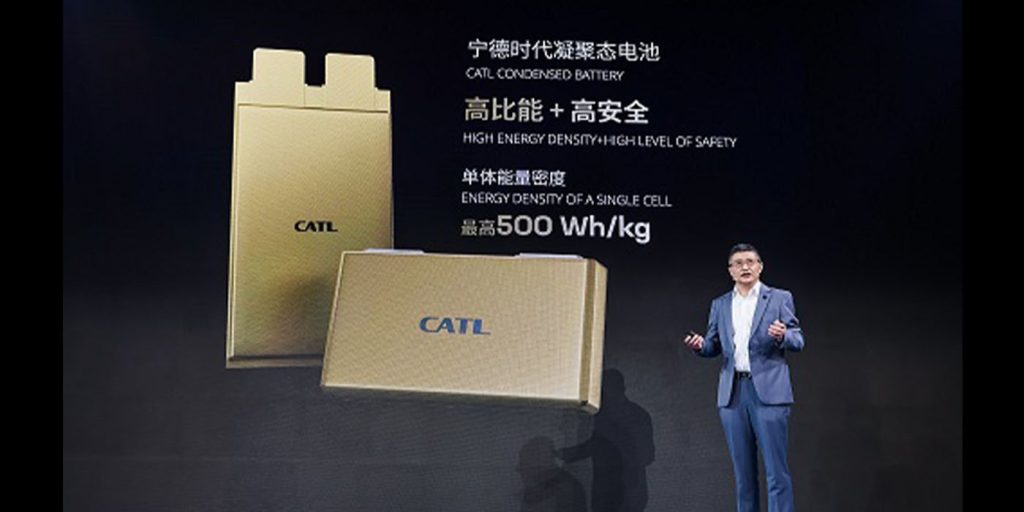
The world’s largest battery maker continues to showcase why it’s the name to beat in its given segment. During the Shanghai Auto Show, CATL launched a new condensed battery that delivers the proper safety and energy density to enable the flight of electric passenger planes. If this technology sounds like it’s still several years away, think again – CATL expects to begin mass production sooner than you’d think.
CATL remains the name to beat in EV battery development, not only in China, where it is headquartered, but around the entire globe. This past February, the company emerged yet again as the largest battery market share holder on the planet for a sixth straight year.
Today’s product launch is merely the latest breakthrough in a battery technology road map that extends further than any other competitor to date. For example, in the summer of 2021, CATL unveiled its first-generation sodium-ion battery, delivering an energy density of 160 Wh/kg.
A year later, the company was touting its energy-dense M3P cells, followed by its cell-to-pack (CTP) Qilin batteries, which recently entered full-scale production and are being integrated into EV models like the ZEEKR 009.
Having already staked its claim in EV batteries and swapping technologies, CATL now looks to the sky and says it will deliver a high energy density battery that can support electric planes.

CATL expects to mass-produce electric plane battery in 2023
The battery technology leader shared details of its new condensed battery during a presentation at the Shanghai Auto Show today, showcasing that a single cell offers an energy density of up to 500
Wh/kg.
For comparison, the aforementioned Qilin cells promise up to 255 Wh/kg, so CATL has nearly doubled that number, opening the door to new opportunities like electric plane propulsion. CATL explains its technology best:
To address the changes of the super high energy density materials resulting from electrochemical reactions, CATL’s condensed battery leverages highly conductive biomimetic condensed state electrolytes to construct a micron-level self-adaptive net structure that can adjust the interactive forces among the chains, thus improving the conductive performance of the cells and in turn the efficiency of lithium ion transporting while boosting stability of the microstructure. What is more, condensed battery integrates a range of innovative technologies, including the ultra-high energy density cathode materials, innovative anode materials, separators, and manufacturing processes, offering excellent charge and discharge performance as well as good safety performance.
CATL states that this cutting-edge battery technology provides a high level of safety in a more lightweight package, enabling an entirely new scenario of electric mobility – particularly electric passenger planes. CATL shared it is already working with electric plane development partners to learn and practice aviation-level safety, quality, and testing standards.
The company says it believes it can achieve mass production of the condensed battery in a short period. Before the new cells are integrated into electric planes, CATL says it will launch an automotive-grade version, which is expected to reach mass production this year.
If that EV-specific cell is anywhere near 500 Wh/kg, it may prove to be a game changer in the all-electric range as it still awaits viable scaled production of long-promised solid-state batteries. Whether in the sky or on roads, CATL’s new condensed battery is technology to keep a close eye on.
Author: Scooter Doll
Source: Electrek




Top comment by Gussy23
Liked by 14 people
Chasing the battery that will viably power flight is good for all battery related things. Because that battery (whatever form it takes) will be pretty close to the silver bullet battery. ? Best of luck CATL.
View all comments